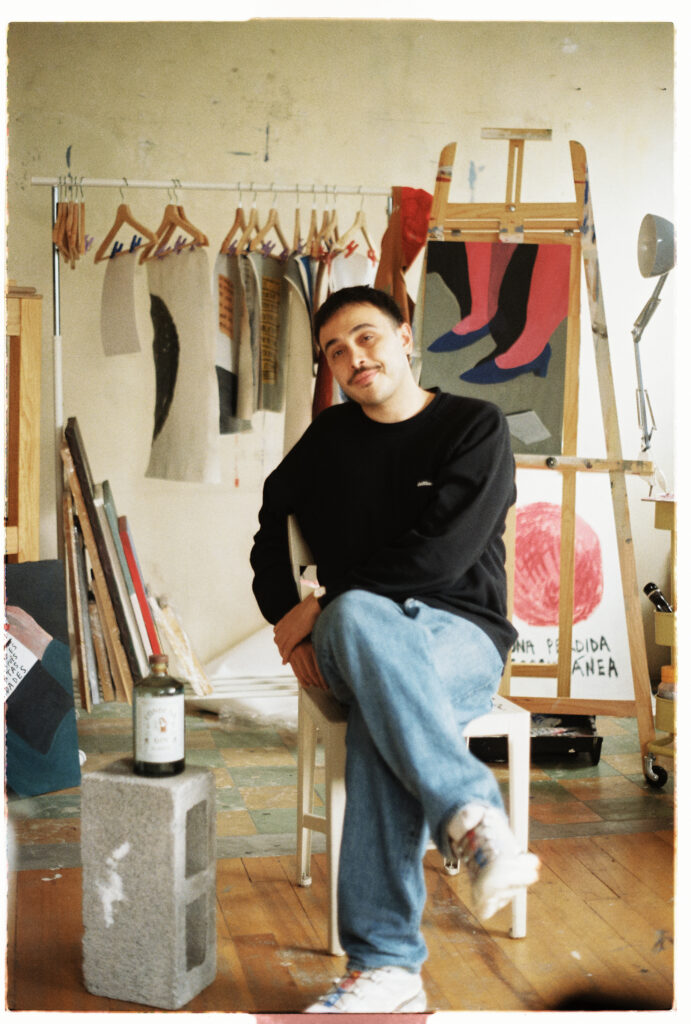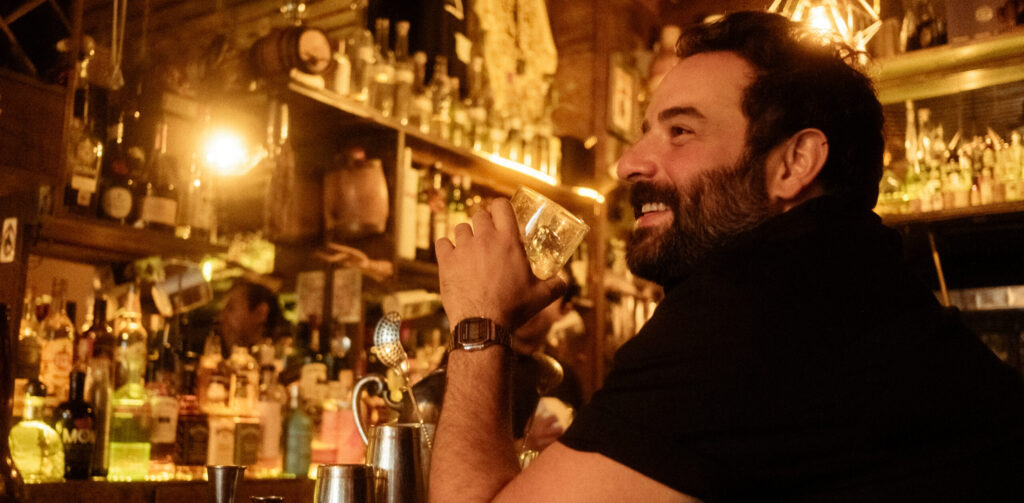Román takes in the city through its quiet details:
For Román de Castro, Mexico City is red—red like love, like fury, passion, or danger. The city is a complex, ever-shifting landscape, and this young artist and writer explores it with a mix of intimacy and nonchalant detachment. Raised in Ciudad Satélite, a suburb nestled in Mexico City’s north, Román now spends most of his time in his studio at Caleta, a creative space in the quiet, historic neighborhood of Santa María la Ribera
Román takes in the city through its quiet details: An empty chair, a hidden garden, a flicker of color going mostly unnoticed by passers by. Born in 1998, he works across painting, installation, and object art, all deeply informed by language. With a deep love for art, architecture, food, film, and music, he sees Mexico City not just as his backdrop—but as a constant source of inspiration.
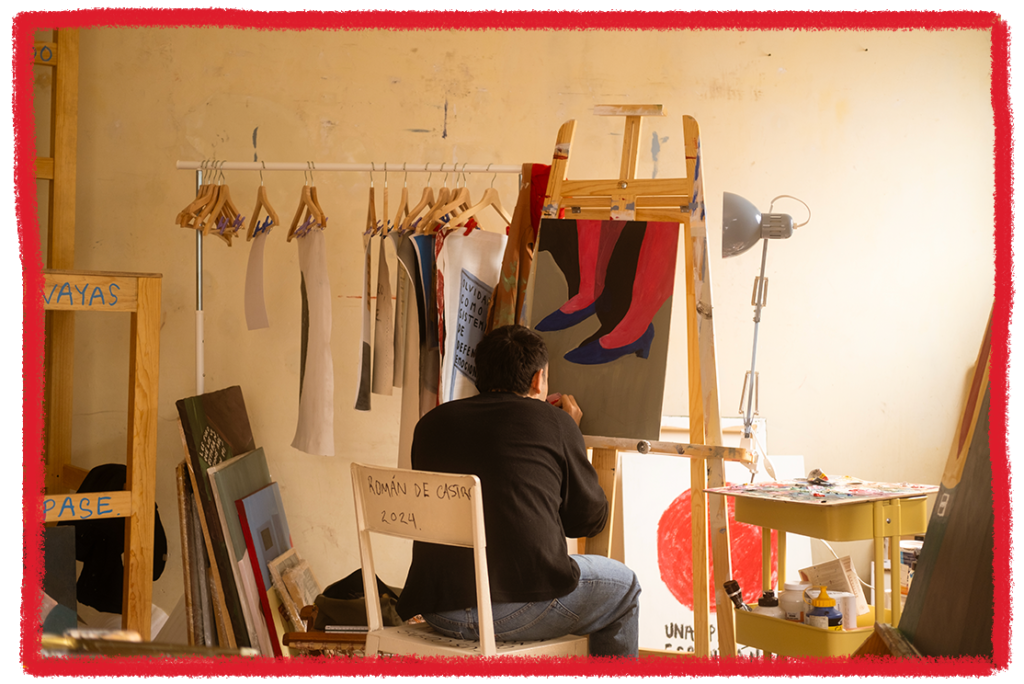
Between Two Worlds
Román speaks—and writes—about growing up in the suburbs with a kind of bittersweet fondness. His childhood was split between two suburbs: Mexico City’s ACiudad Satélite, and suburban Rio de Janeiro, the birthplace of his Brazilian mother. He admits to some mixed feelings about both ‘boring’ environments, but credits them with sparking his imagination.
He muses on a suburban childhood. “Growing up in a place defined by boredom had a big impact on me,” he says. “That feeling of having to invent something to do—come up with a game, find a hobby—because there’s nothing else around. The suburbs feel frozen in time.”
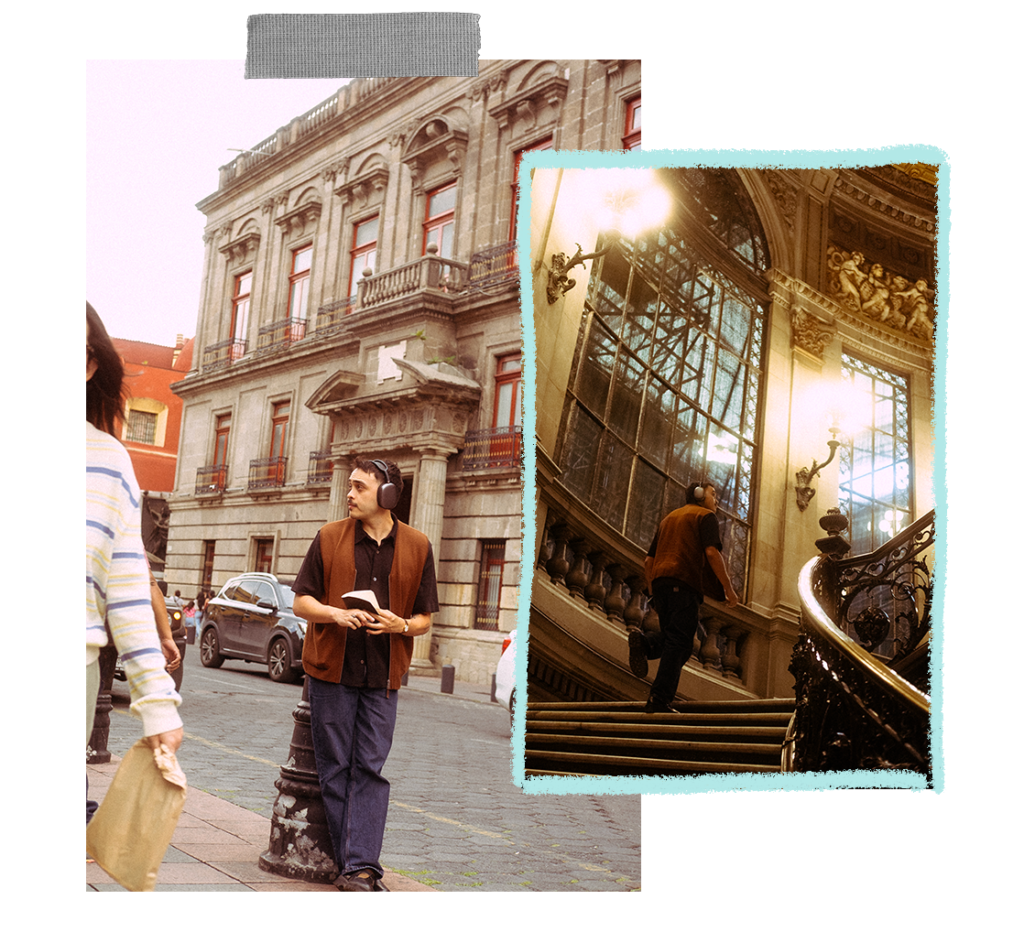
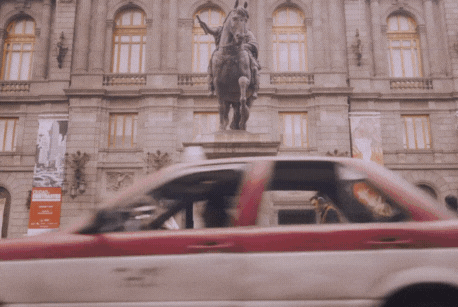
That early need to fill space with ideas eventually led him down an artistic path. It was during the pandemic—out of sheer boredom, as he puts it— he began writing and creating the work that now defines his practice. A rising journalist, he quickly left that career to pursue this newfound creative outlet full-time.
Today, Román splits his time between ACiudad Satélite and ASanta María la Ribera, , one of Mexico City oldest neighborhoods. With roots going back to 1859, Santa María is home to some of the city’s most distinctive architecture AFundación Casa Wabi – Sabino, a contemporary art space. Having since moved to neighboring AAtlampa, the foundation now operates out of a building designed by Bosco Sodi and Alberto Kalach. Even so, the house where Román works continues to carry that same creative spirit..
Now called ACaleta. the house—with its gracefully aging walls and original tiled floors—is shared by several artists. It also functions as a cultural center, hosting workshops, exhibitions, and open studio days..
Just a few blocks away is the AKiosco Morisco, a landmark cast-iron pavilion originally built to represent Mexico at the 1884–1885 World’s Fair in New Orleans. It was moved to its current location in 1910 and remains a beloved symbol of the neighborhood..
Chairs, Color, and the Art of Stillness
Román has a thing for chairs. They appear throughout his work in different colors, sizes, and styles. Some are drawn; others are real pieces of furniture that he alters with paint and handwritten text.
While Caleta is his favorite place to think and create, he also used to spend time at AHospital de Jesús, in the heart of the ACentro Histórico near the APalacio de Bellas Artes.
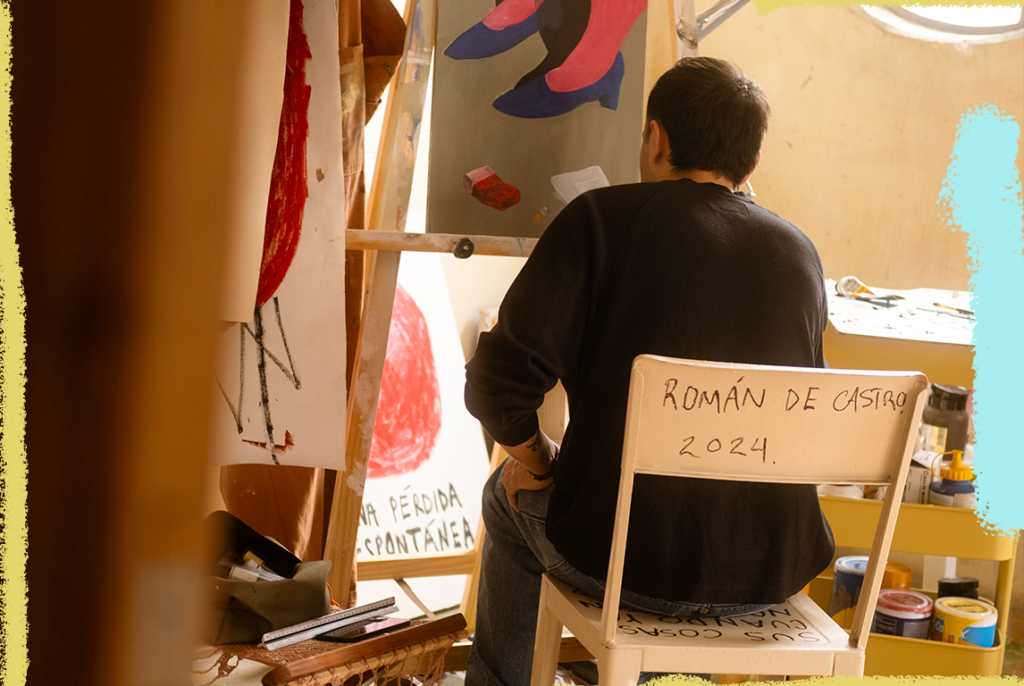
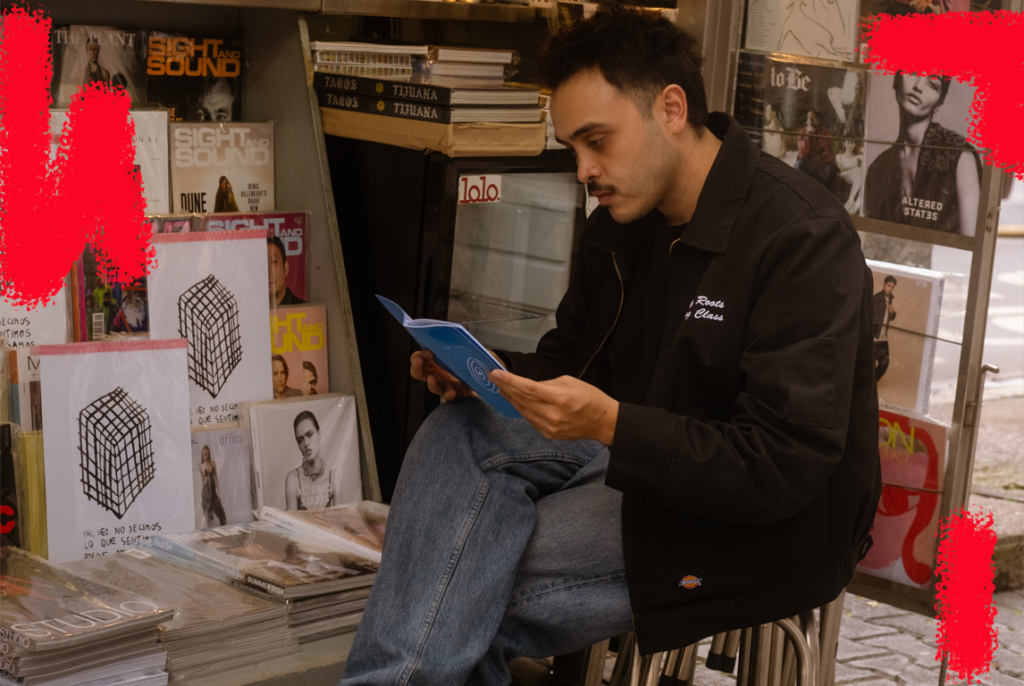
“A friend of mine—an architect—told me about it,” Román says. “I liked going there to sit, enjoy the quiet. It’s an amazing place because, even though it’s right in the middle of the city’s chaos, it feels completely peaceful. There’s something magical about it. And it has murals by some of the great Mexican artists.
Founded over 500 years ago, AHospital de Jesús is one of the oldest buildings in Mexico City—and one of the first ordered built by Hernán Cortés. With its open-air hallways and sunlit courtyards, the space is designed to breathe. At its center is a serene garden, filled with trees, plants, and a fountain, inviting visitors to slow down and take a seat. To take a … chair.
“I think Mexico City is red—all its shades. Red is passion, but it’s also violence. It’s caution, but it’s love, too. This city makes you feel both love and rejection. It’s my favorite city in the world, but some days I really don’t like it—because of the violence or the insecurity,” he says.
Román has traveled to cities all over the world, but he says he can’t imagine living anywhere else.
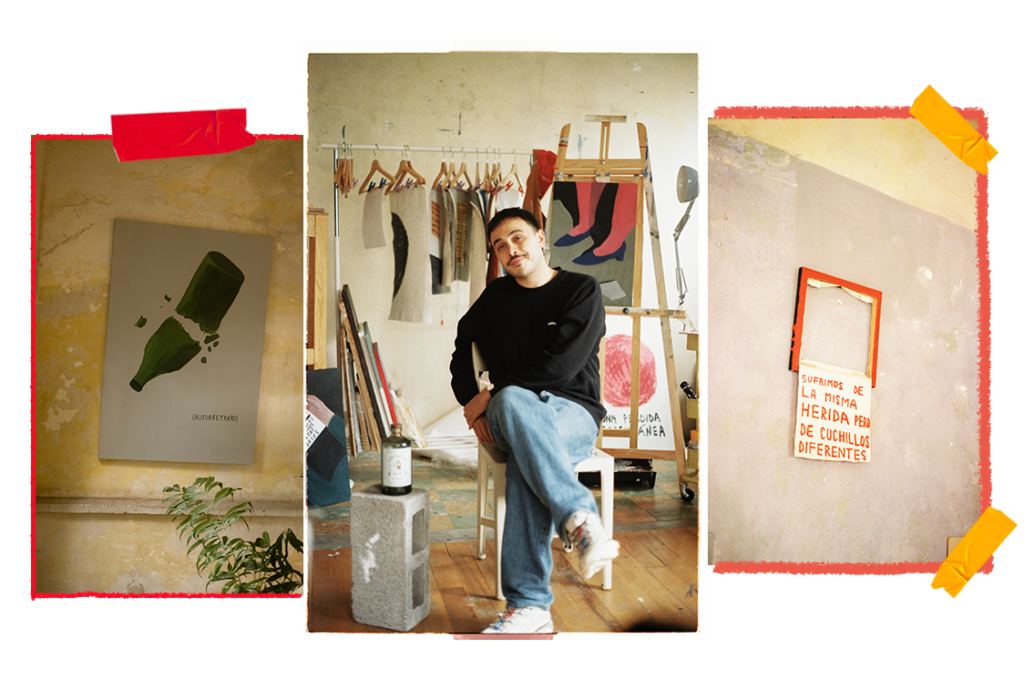
“For me, it’s the most iconic city in the world,” he says. The reason? Its cultural energy. It quivers with passionate people, creators, agitators, lovers.
A passionate cinephile—he studied film—Román is a regular at the ACineteca Nacional, both for the programming and the building itself. Besides ACaleta, he’s drawn to spaces like AGalería Mascota, and the hybrid gallery-bar ALugaroso, When it comes to music, especially jazz, he frequents ACasa Franca, in AColonia Roma Norte and AParker & Lenox, in la Juárez.
Local Flavors, Global Roots
No portrait of Mexico City would be complete without food. The city’s ALas fonditas — humble home-cooking spots often run from people’s living rooms—are just as iconic as its old-school cantinas. Many don’t have names, Roman’s favorite included. It’s known simply by its location: on ADr. Atl, street, directly across from ACaleta.
As he describes it, you can almost see it: plastic tablecloths printed to look like cloth, cloudy glasses, set menus and cold drinks, all at affordable prices.
“To me, fonditas are a quiet revolution against the city’s gentrification,” Román says. “They’re totally unpretentious—and they serve classic Mexican food at its best.”
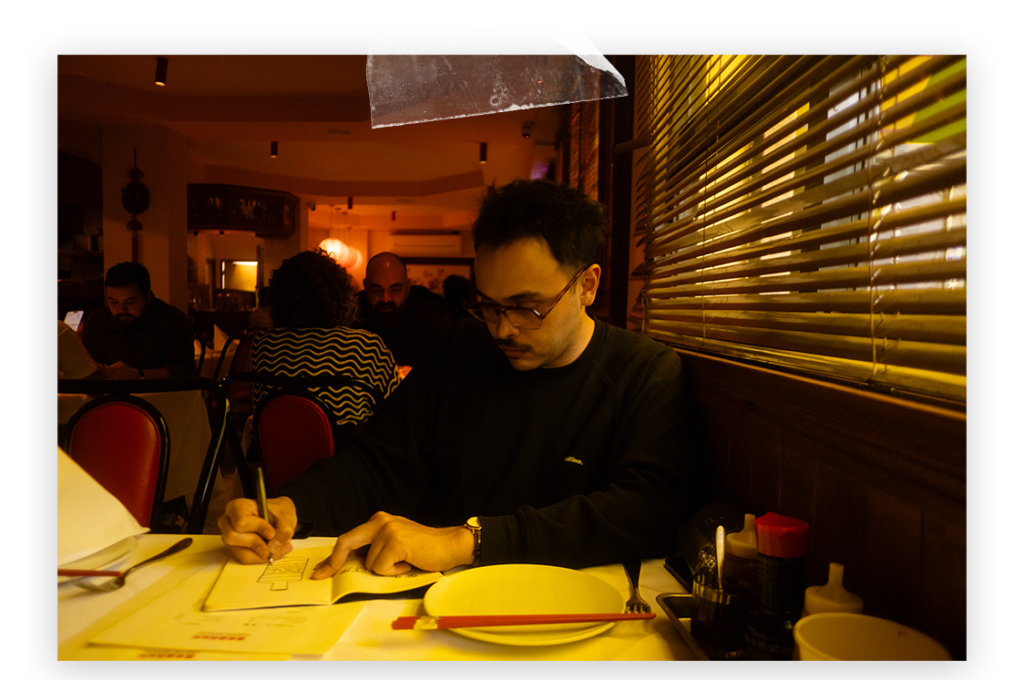
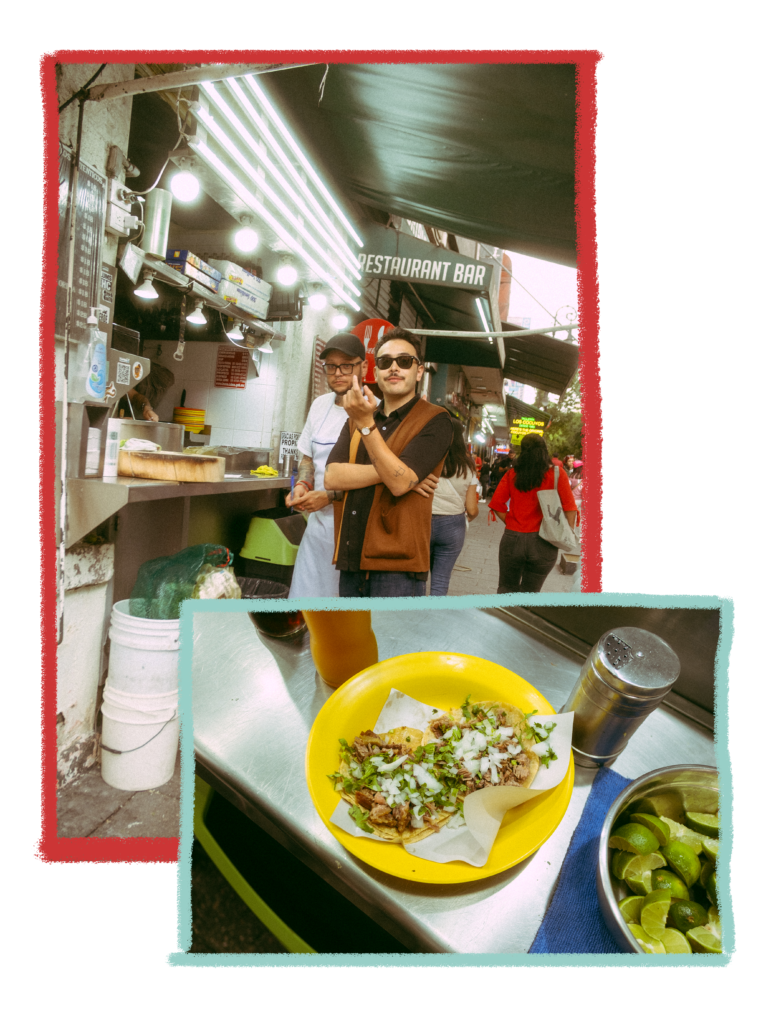
But in a city as global and ever-changing as CDMX, international influences are everywhere. One of Román’s top picks is ACantón Mexicali, a restaurant serving northern Mexican-style Chinese food—a culinary blend born in cities like Mexicali, where Chinese migration has shaped local culture for generations.
“It’s the best Chinese food I’ve ever had,” he says, captivated not just by the flavor, but by the story of cultural fusion it represents.
He’s also a fan of AUltramarinos de Mar, a seafood-focused restaurant in Colonia Roma Norte, and when he’s in the mood for something more classic and refined, he heads to the restaurant at ASan Ángel Inn, a former hacienda in the south of the city, now a hotel and dining institution.
¨Mexico City is red—red like love, like fury, passion, or danger.¨
Román continues to explore the city that shaped him—one chair, one color, one story at a time. His work is a quiet conversation with Mexico City: full of tension, tenderness, and deep imagination. You can follow more of his reflections and artistic practice at medium.com/@romandecastro or on Instagram at @rom.mo.
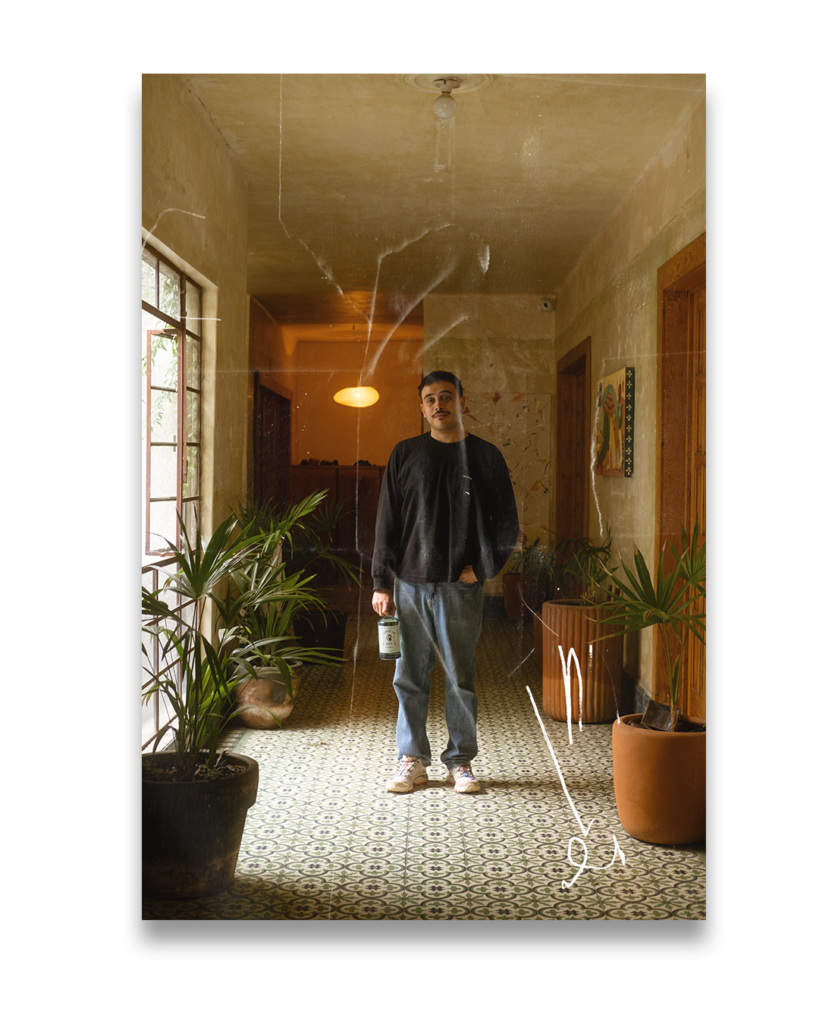
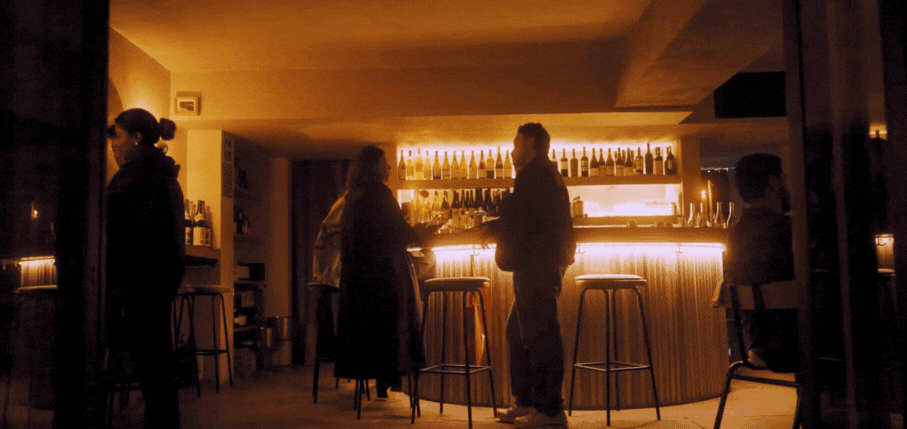
Quickfire favorites
FAVORITE SPOT FOR A CONDESA GIN:
ANIV A wine bar pouring small-producer bottles, paired with a globally inspired kitchen. Intimate, quiet, and curated.
FAVORITE RESTAURANTS:
AUltramarinos del Mar A classic space where an oyster bar meets an open kitchen. Fresh fish, seafood, and a curated wine list—served with ease and elegance. A little pricey, but worth it.
ATacos Cocuyos A Centro taquería since 1980. Overflowing with different cuts of meat, and boasting some of the quickest knife work I’ve ever seen.
ASanto Handroll A Led by Chef Hiroshi Kawahito. Vibey hand roll spot with a thoughtful selection of Japanese sake, whisky, gin, and international beer. You may be seated next to the DJ.
BEST LATE NIGHT CHILL SPOT:
ACovadonga A Roma institution with Asturian soul and timeless charm. A place to talk, play dominoes, and savor Spanish classics. Since the 1940s, it’s been a haven for thinkers, artists, and lovers of long, late dinners.
BEST SPOT TO DANCE:
ABarba Azul A cornerstone of the city’s nightlife. Decades of music, stories, and memorable nights.
FAVORITE STREET FOOD SPOT:
ALa Sociedad de la Hamburguesa Known for its signature smash-style burgers. Unpretentious. Unmissable.
FAVORITE GALERIES:
DON’T ASK JUST GO:
A La Faena More cantina than museum. Full of history, mezcal, and everything in between.
ARCHITECTURAL MUST SEE:
Anything Teodoro Gonzalez de Leon Brutalism with poetry. Concrete that breathes.
PLACES MENTIONED:
ANIV
AULTRAMARINOS DEL MAR
ATACOS COCUYOS
ASANTO HANDROLL
ACOVADONGA
ABARBA AZUL
ALA SOCIEDAD DE LA HAMBURGUESA
ACALETA
APROYECTO H
AMASCOTA
ALA FAENA

